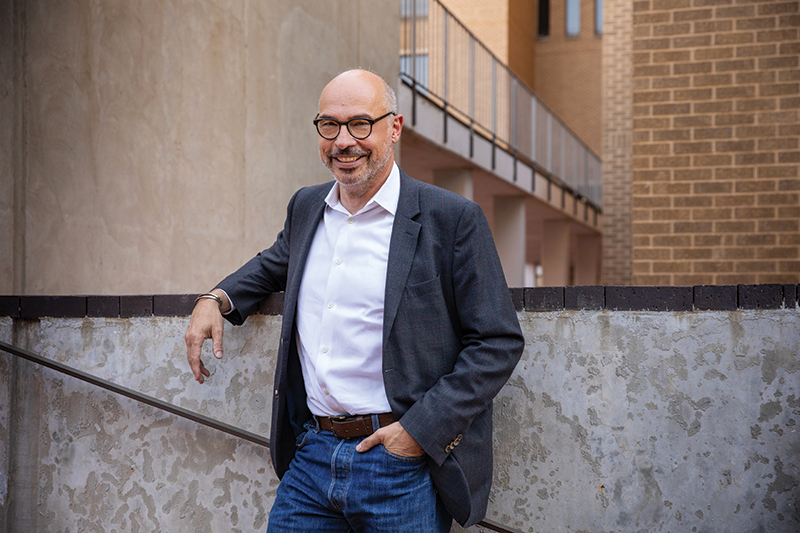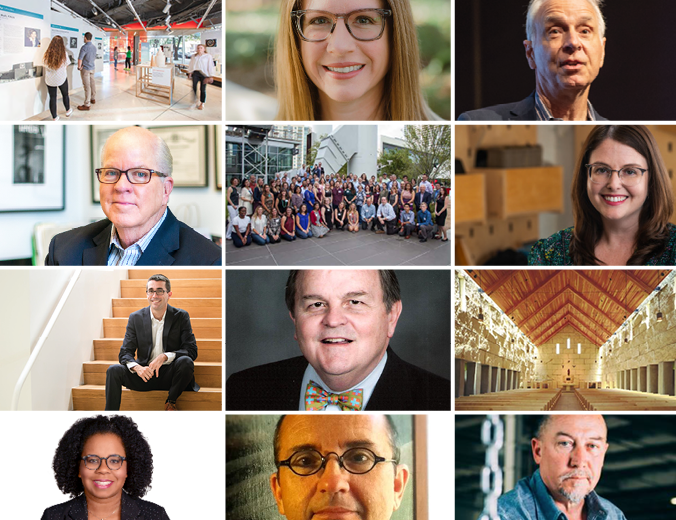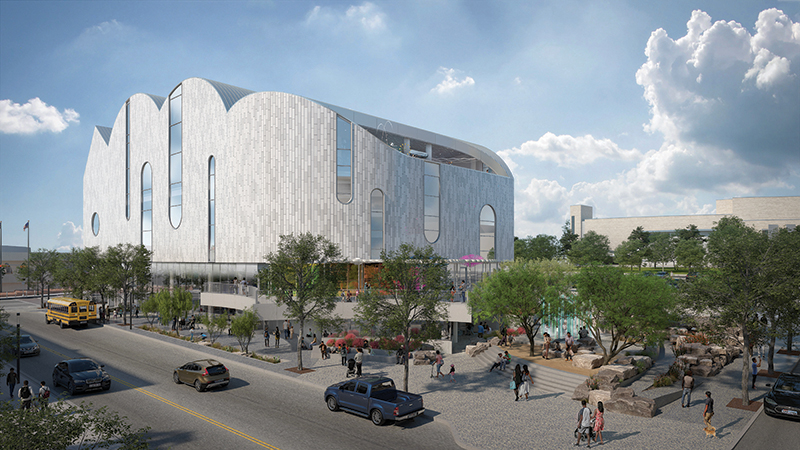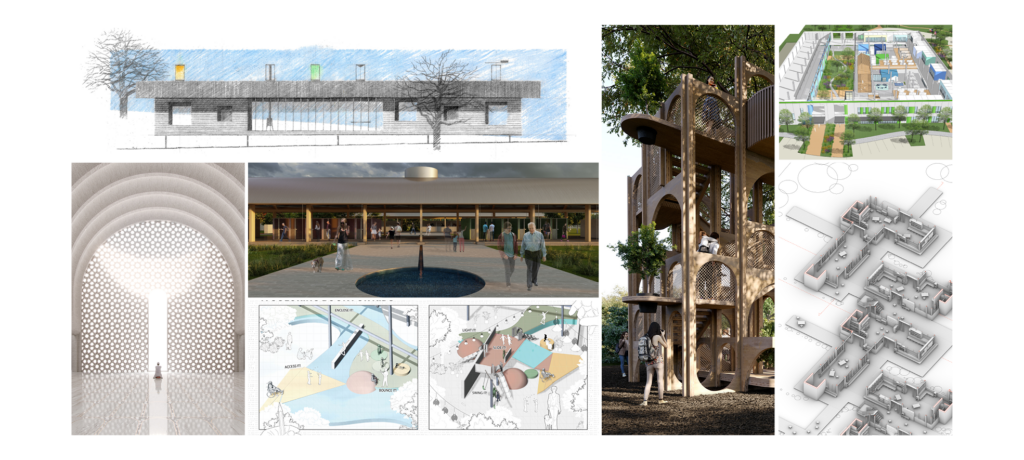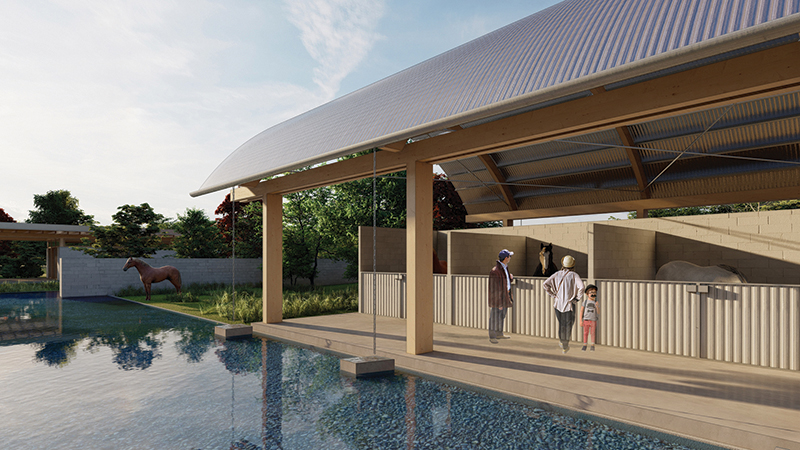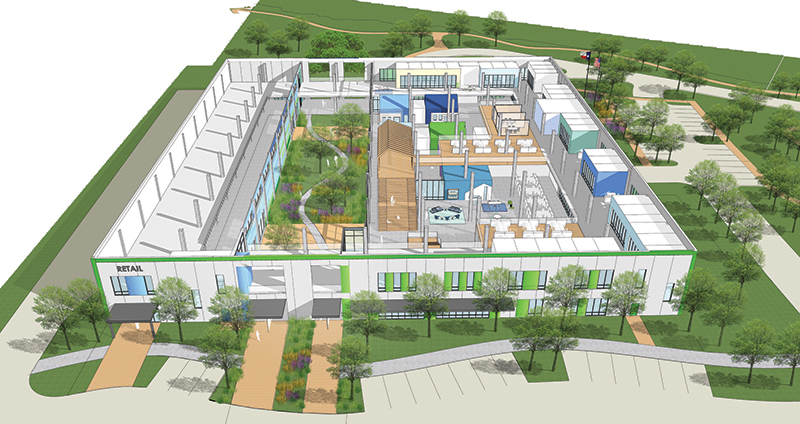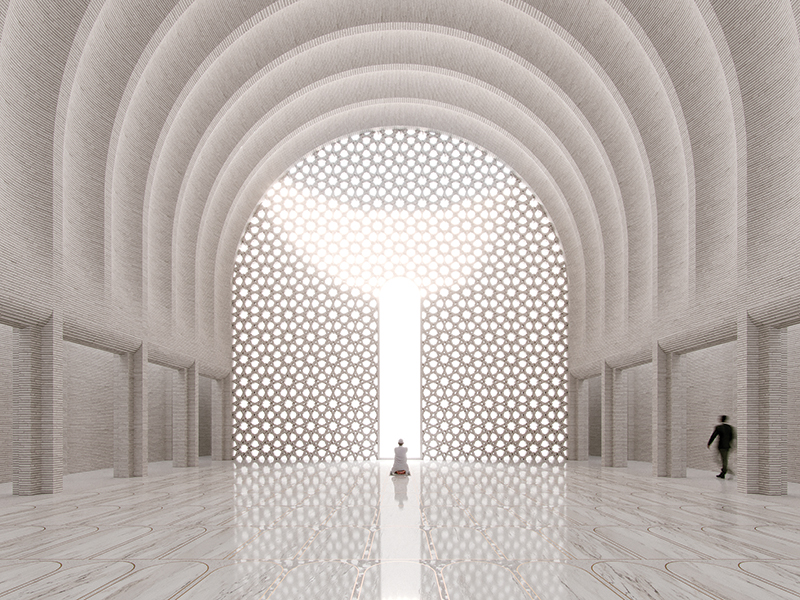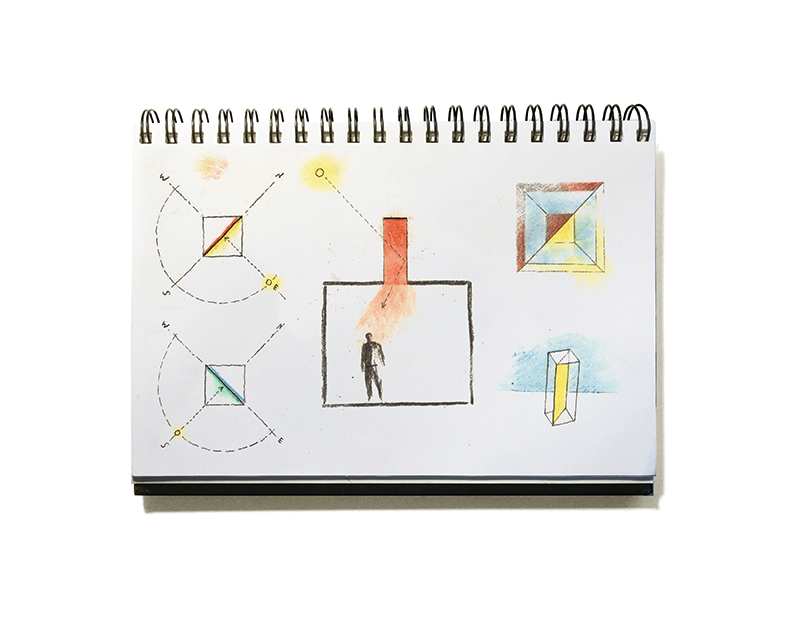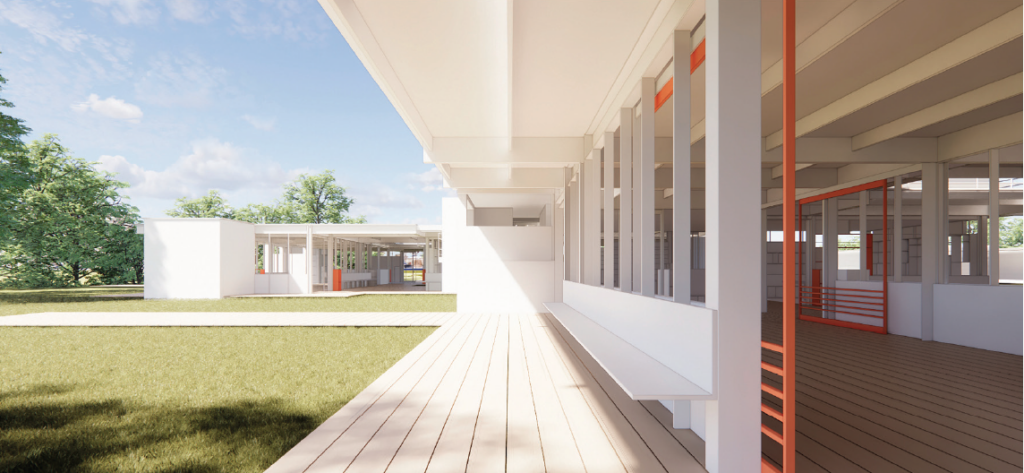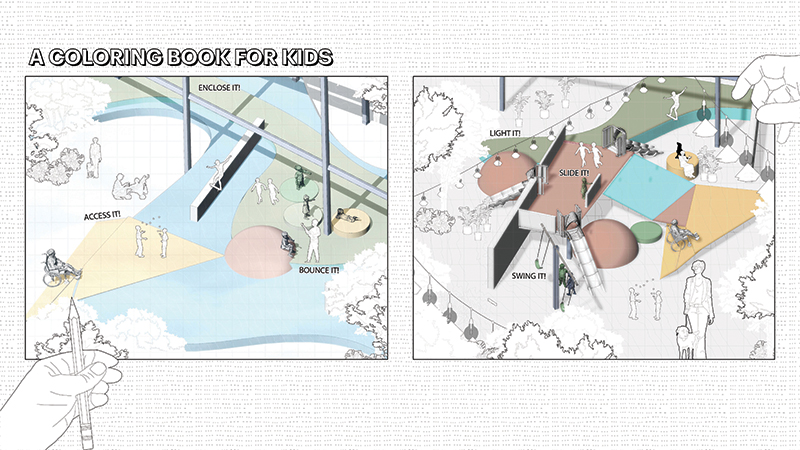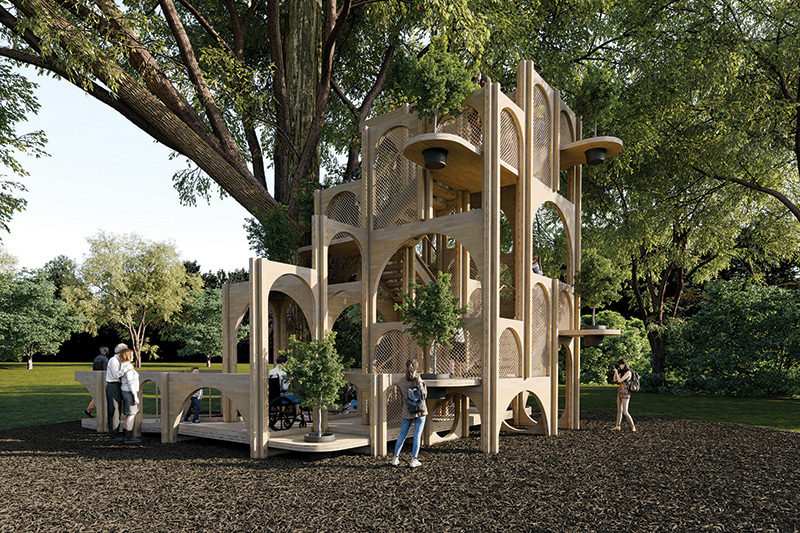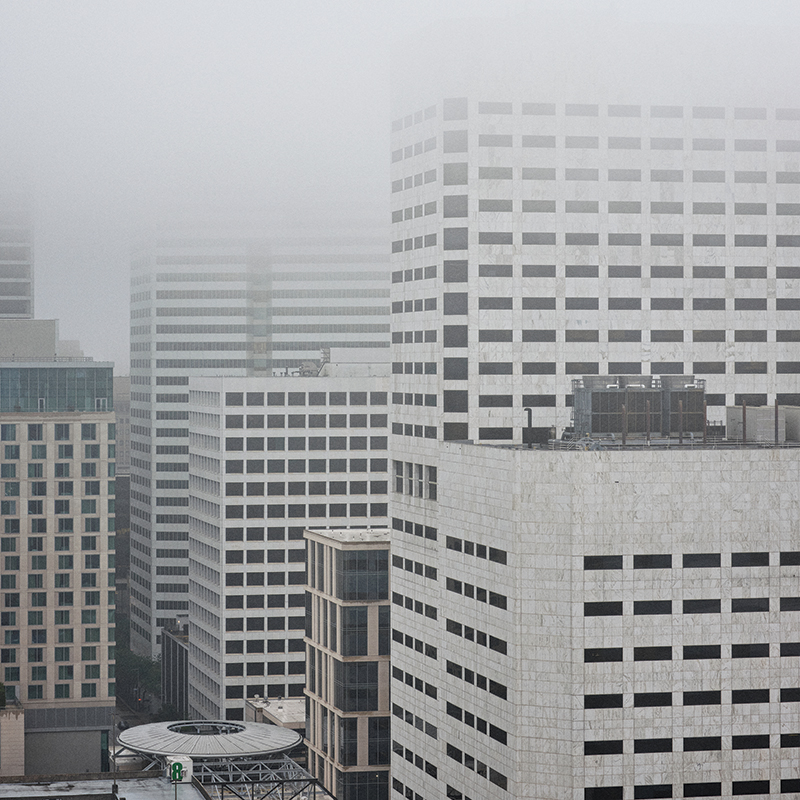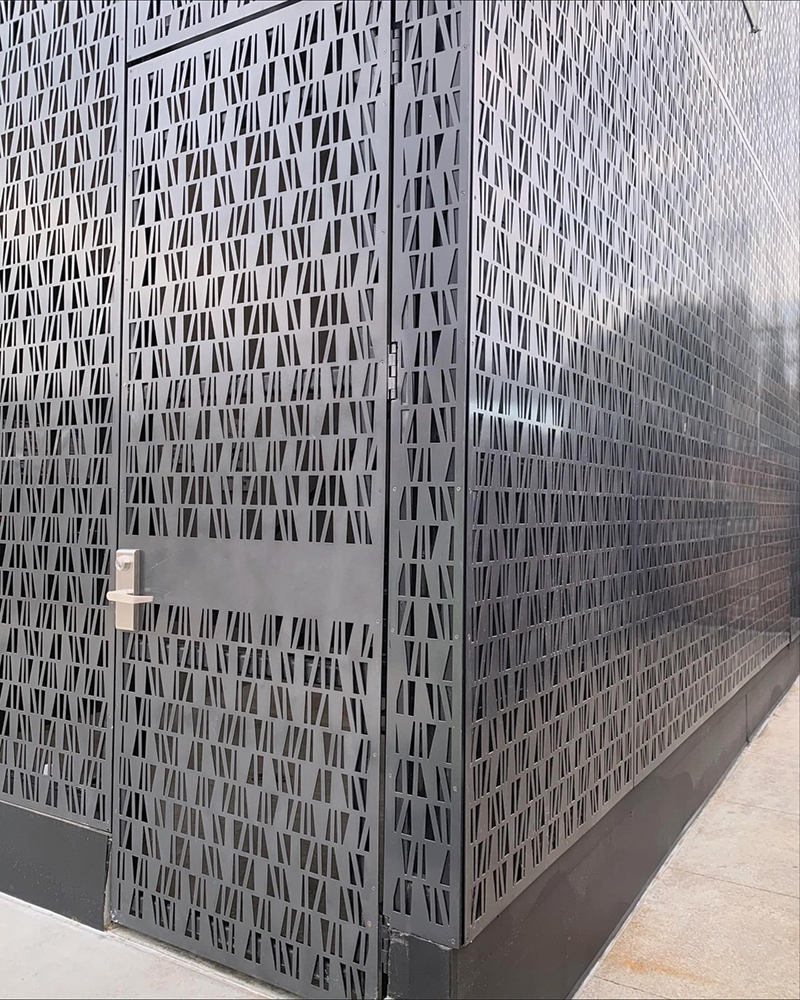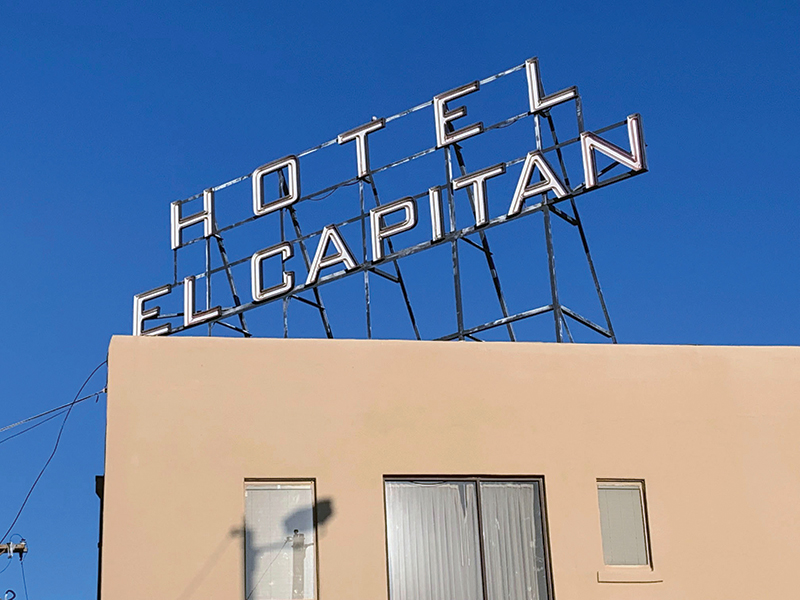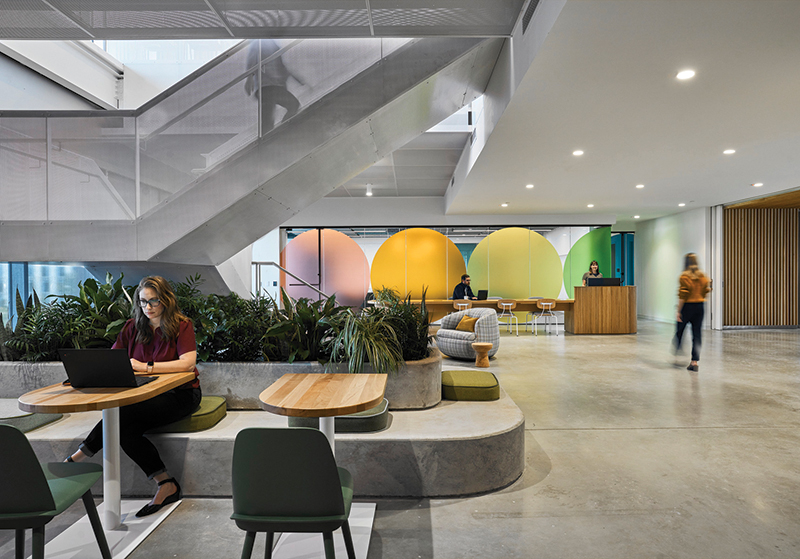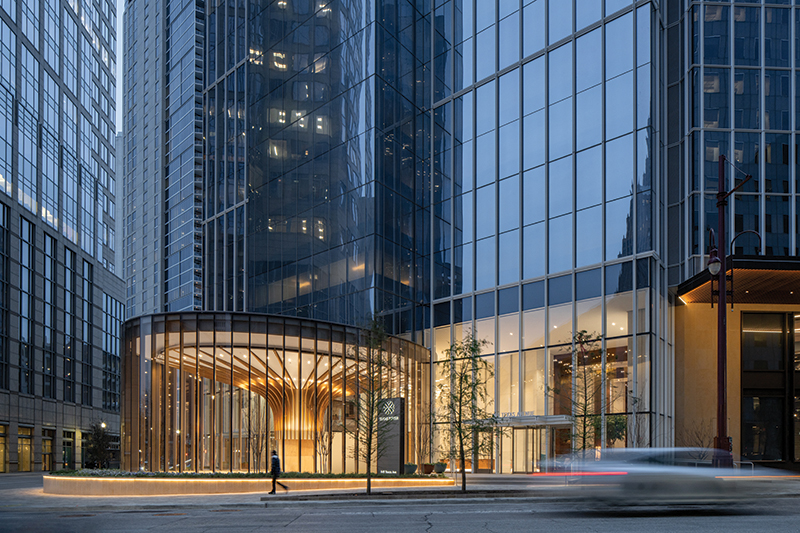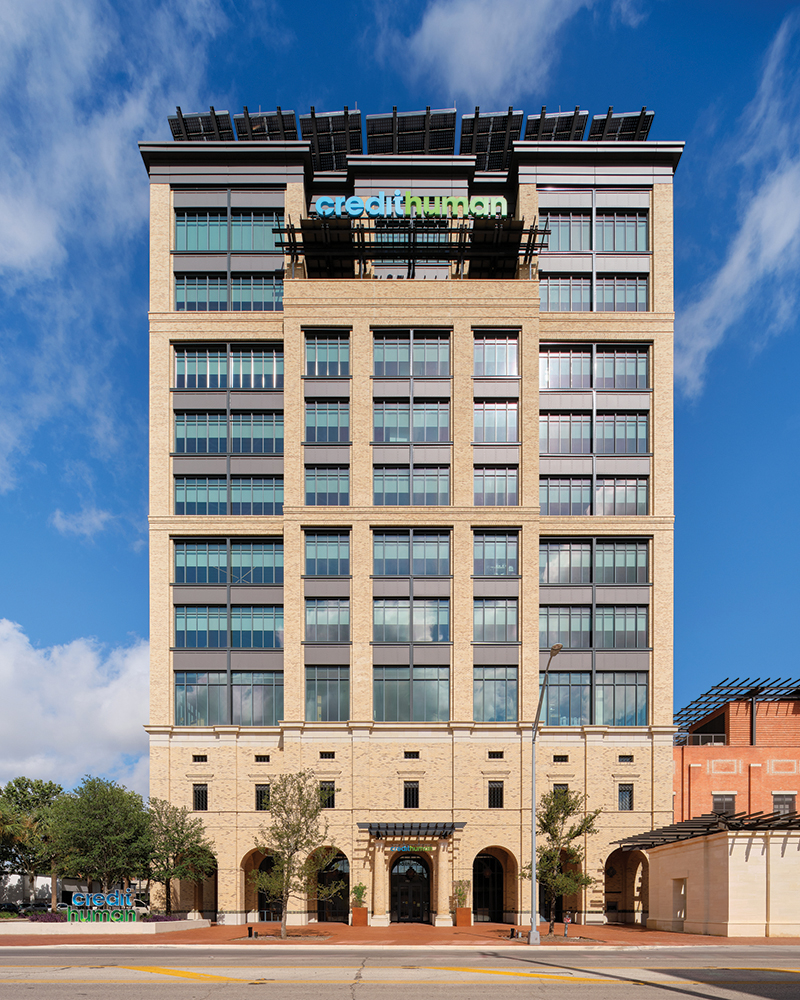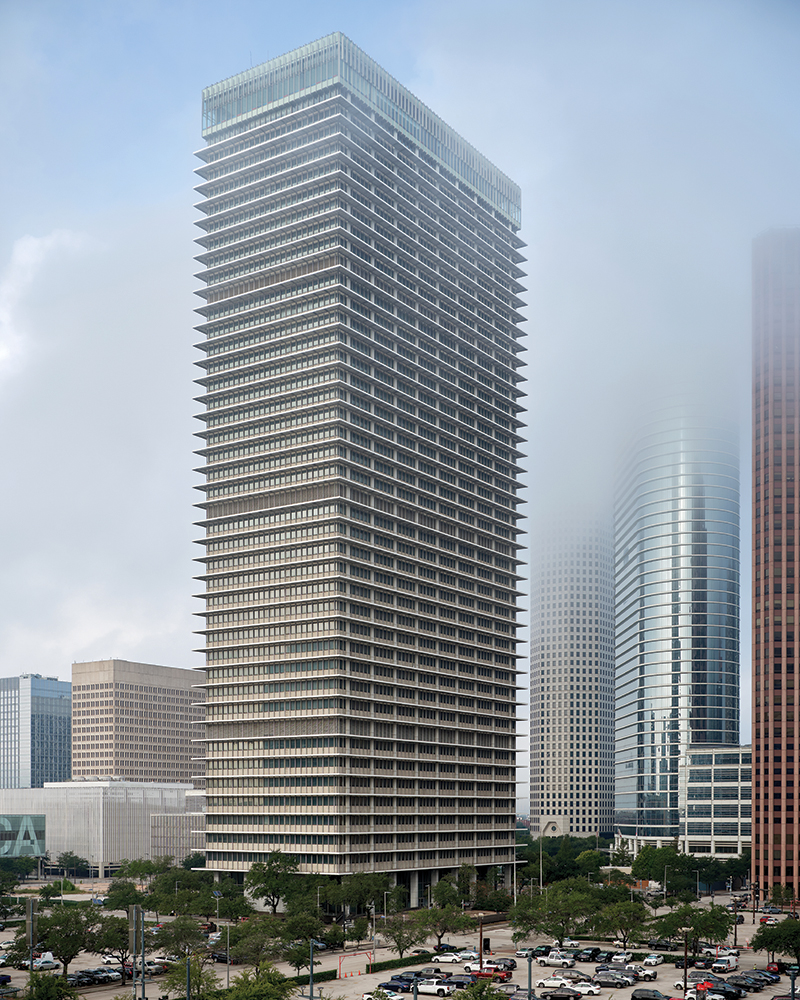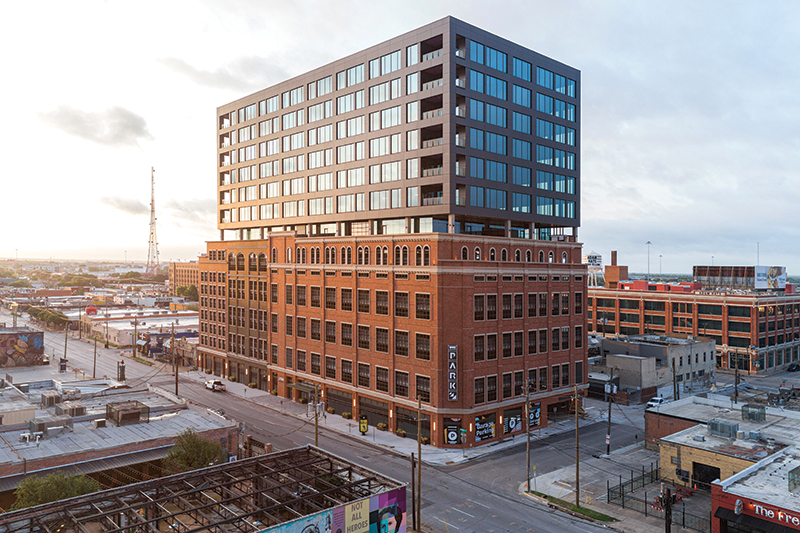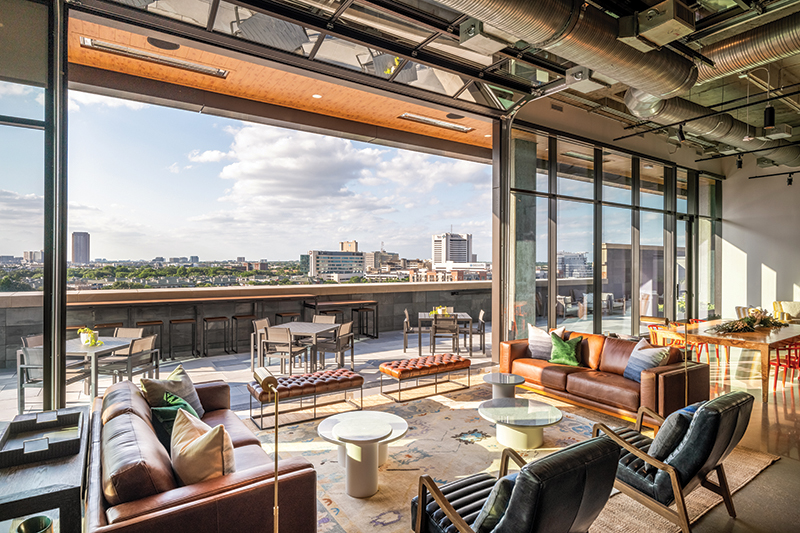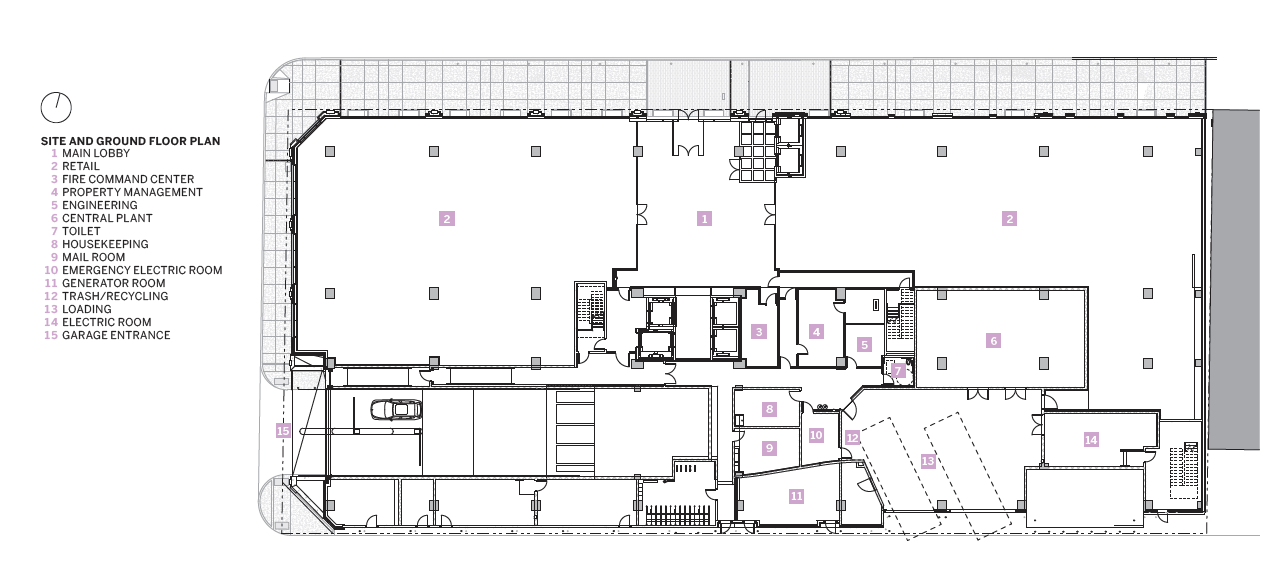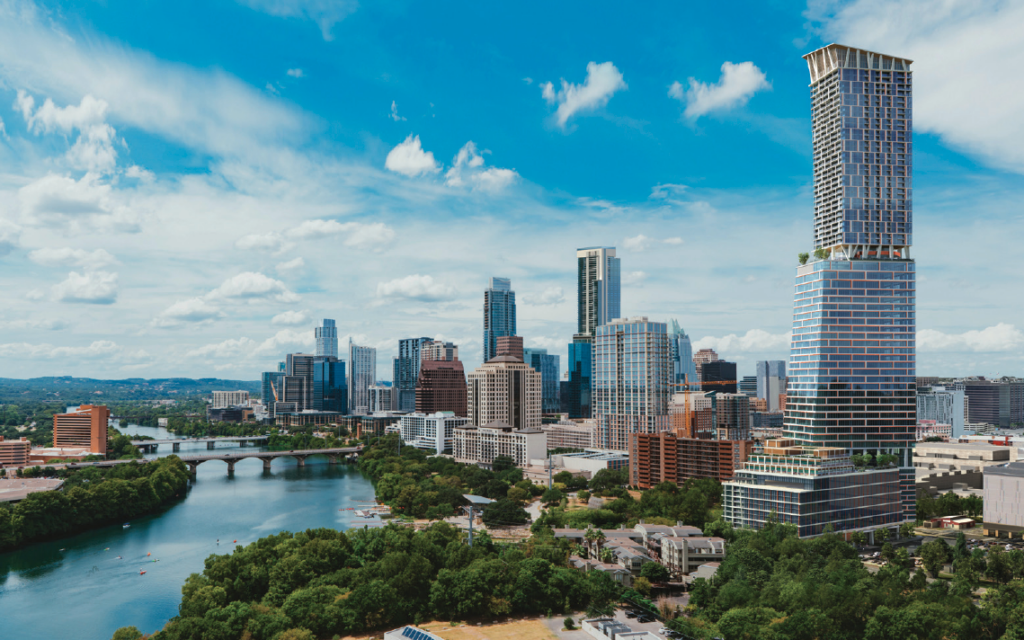
Deep Roots
The Stack brings modern office space to Dallas’ Deep Ellum.
Client and Developer Hines, Westdale, and Ivanhoe Cambridge
Architect 5G Studio Collaborative
Contractor Whiting-Turner
Interior Design Ink + Oro Creatives
Civil Engineer Kimley-Horn
Landscape Architect TBG Partners
MEP Engineer ME Engineers
Structural Engineer Thornton Tomasetti
Lighting Lang Lighting
Parking Consultant HWA Parking
Elevator Consultant Persohn/Hahn Associates
Sustainability SIG
BMCS/Security HMA Consulting
AV/IT Consultant IP Design Group
Exterior Building Maintenance ATS
Fitness Consultant Trophy Fitness
Facade Consultant Entuitive
Acoustics Cerami
Wind Testing RWDI
Commissioning Cogent Commissioning
Dating back to 1873, Deep Ellum was the first district in Dallas established exclusively by African Americans. In time, the addition of European immigrants resulted in a vibrant, diverse population that was unique for its day. While it was originally named “Deep Elm” and centered around Elm Street, early residents began to pronounce it “Deep Ellum,” and the name stuck. Early in the 20th century, Henry Ford built an assembly plant at 2700 Canton Street to manufacture the new Model T. He later converted the plant from automobile manufacturing to bomb-making during World War II, which is how the contemporary music venue The Bomb Factory got its name. Many other businesses thrived as the district grew throughout the rest of the 20th century. Contributing to this growth was William Sidney Pittman, the first Black architect in the state of Texas.
Deep Ellum’s most noted attraction has always been its vibrant music scene. In the 1920s, Deep Ellum was an important hotbed of jazz and blues, nurturing such giants as Blind Lemon Jefferson, Bessie Smith, and Huddie “Leadbelly” Ledbetter. Later, in the 1980s and ’90s, came DFW legends the Old 97’s, Erykah Badu, and Jackopierce. (I reveal my age by fondly remembering when they debuted.) It was about this time that the music venues Trees and The Bomb Factory — which have attracted world-famous performers such as Nirvana, Radiohead, and Arcade Fire — were established.
Eventually, this carefully nurtured music scene, along with the historic character of Deep Ellum, created the anchor for attracting new restaurants, nightclubs, apartments, and, now, office space. It’s into this mix that Houston-based developer Hines, Westdale, and Ivanhoe Cambridge and the architects at Dallas-based 5G Studio Collaborative recently designed and constructed a 16-story Class AA office tower known as The Stack at 2700 Commerce Street, which happens to be adjacent to The Bomb Factory.
The Stack takes its name from its signature configuration, featuring a six-story office tower perched atop a nine-story parking garage, with outdoor terraces and amenity spaces slipped in between on the 10th floor. This fabulistic “Dagwood sandwich” simultaneously engages the Dallas skyline at the top while relating to the scale and character of the neighborhood at the bottom. According to 5G Studio Collaborative co-founding partner Yen Ong, AIA, the unique design response was driven by concerns that the developer had about how the building should exist in both the nearby and faraway contexts of its location in Deep Ellum.
Access to the main ground-floor lobby is off Commerce Street, where the surrounding parking garage is convincingly faced with antique molded brick and cast stone. The exterior massing is divided into nine unequal sections, each emulating a unique facade in keeping with the historic character of the surrounding neighborhood. (This design aspect was so convincing from photographs that, at first, I humorously thought the writing assignment would be about a new office building constructed on top of a block of existing historic buildings.)
The music scene in Deep Ellum has been a victim of its own success for a very long time, and the oversized garage was included to reduce chronic parking problems on busy evenings and weekends. Right at home in the Dallas skyline, the sleek office tower above provides enviable views in all directions. The tenant amenity space on the 10th floor features a lounge with coffee and cocktail bars, a large common meeting space, a state-of-the-art gym with indoor and outdoor fitness areas, and a sculptural monumental stair directly accessing prime lease space above. (It would seem that today’s workers can only be lured back to the office with goodies from heaven.) To accommodate ventilation concerns that arose during the COVID-19 pandemic, the lounge space features a large overhead glass door that can open to the outdoor terraces for fresh air and unobstructed views toward downtown over U.S. 75. As with many commercial buildings currently coming on the market, the interior is finished off with the flavor of a renovated urban warehouse: with brick, an exposed concrete structure, and polished concrete floors throughout, all offset with ample natural wood.
Facing east along Commerce Street, the parking garage presents a large, blank concrete wall, which appears to be in response to fire codes and lateral bracing requirements. This provided a perfect blank canvas for a new mural by internationally known artist Tristan Eaton. Eaton, who makes his home in Los Angeles, has painted large murals on buildings in such cities as New York, Paris, and Shanghai and has collaborated on projects with Nike, Versace, and the luxury watchmaker Hublot. Honoring Deep Ellum, the mural’s composition is a vibrant mash-up of local musicians, anchored by a large portrait of a black cowgirl. Also featured are the words “Brotherhood Eyes,” which is a reference to a controversial weekly newspaper published by none other than William Sidney Pittman. (Many architects I know have restless souls and are often not happy without a creative side hustle stacked on top of a day job.)
Although The Stack successfully engages the ground at Commerce Street, one dimension is missing, due to the way the building and its iconic neighbor turn away from each other. While each is a major presence in the neighborhood, they share only a common narrow alley for back-of-house service functions. Coming through the front entry lobby for the first time, I was expecting the view to continue through the building to The Bomb Factory. But instead, I was confronted by a dead-end wall, just beyond the elevators, finished with mirrors reflecting the entry behind me at Commerce Street. It is, perhaps, a lost opportunity, and the alleyway appears destined to remain as is.
Concern over gentrification has become a modern mantra, and rightly so — it does cause real emotional and economic pain. If new development is not undertaken carefully, the associated pitfalls of gentrification can be especially acute in neighborhoods that have a unique history tied to the culture of a city, or where new development displaces historic populations. As a result, it can exacerbate social inequality along the lines of class and race.
This past summer, I started working in a brand-new multistory office building that was skillfully placed in its historic neighborhood on the southside of Fort Worth. Months of planning went into its success. I now understand the attraction of this arrangement, and I cherish my floor-to-ceiling views of downtown and beyond coupled with being just steps away from some of the hottest restaurants, nightclubs, and living spaces in town. At the same time, I’m mindful that I should respect the rights and concerns of longtime residents. Similarly, The Stack, a new resident in Deep Ellum on what used to be an open parking lot, manages to quietly place itself amid its new surroundings.
Lee Hill, AIA, is an artist and architect and works as a project director at VLK Architects in Fort Worth.
Also from this issue


